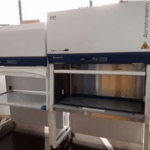Start by naming the milestone. If this is a proposal, your spend should lean into a durable setting and a center stone you’ll be proud of long-term. If it’s a promise ring, you’re signaling commitment—meaning and daily wear matter more than hitting a carat number.
Next, decide where money works hardest. Put the biggest share into cut (sparkle you can see) and everyday durability (the setting and metal that hold up to real life). Then use design to stretch the look without stretching the budget: shapes that face up large (oval, pear, marquise, elongated cushion), slimmer shanks that visually emphasize the center, and halo/hidden halo details that add presence for less than jumping a carat tier.
Engagement ring—4Cs that actually save money
Think of the 4Cs as levers. Pull the right ones and your 4Cs engagement ring budget goes further.
Cut (non-negotiable).
Prioritize Excellent/Ideal (or the top cut grade for your shape). Light return drives beauty. Compromise here and you’ll spend more elsewhere trying to “fix” a dull stone.
Color.
In white metals, many couples land happily in G–H–I, which reads bright without paying the premium of D–F. In yellow or rose gold, J–K can look intentionally warm and gorgeous.
Clarity.
Aim for eye-clean rather than perfection on paper. VS2–SI1 is the sweet spot in many shapes. Place prongs or a halo near an inclusion at the edge and it disappears in daily wear.
Carat.
Prices jump at magic numbers. Buying 0.90–0.95 ct instead of 1.00 ct keeps the look while trimming cost. Elongated shapes also help your finger coverage without inflating budget.
Fluorescence.
Medium/strong fluorescence can lower price on near-colorless stones and sometimes make them look whiter in daylight. View it in varied lighting and trust your eyes.
Certification.
For diamond centers—natural or lab-grown—ask for a GIA or IGI report and check measurements, not just carat weight. Two stones with the same carat can face up differently.
Promise ring—smart specs & spend
A promise ring leads with meaning, then specs. Pick a design that’s comfortable all day and communicates your message clearly.
Metals.
Sterling or 10k/14k gold keeps cost sensible. Lower profiles—bezel, flush, or petite solitaire baskets—wear like a dream and don’t snag sweaters.
Stones.
Moissanite, lab-grown diamond, or birthstones are all fair game. Certification is typically optional unless you’re choosing a diamond center.
Upgrade path.
If you imagine proposing later, choose a promise ring that will stack beside an engagement ring or a stone that can be reset into a new design. You’ll honor the original gift while moving into the next chapter.
Stone choices that fit real budgets (diamond, lab-grown, moissanite)
Natural diamond.
Prestige and heritage, with the widest resale market. Great for heirloom builds, but you’ll pay more per carat. Expect a grading report for the center.
Lab-grown diamond.
Chemically and optically identical to mined, typically offering a larger look for the price. Perfect when you want a showy center without breaking the bank. Still ask for an IGI/GIA report.
Moissanite.
Brilliant fire, excellent durability (~9.25 Mohs), and wonderfully wallet-friendly. It shines in promise rings for her and makes budget-savvy engagement rings and wedding rings that look stunning in photos and real life.
Style note for iced aesthetics.
If you love hip-hop sparkle, micro-pavé, channel, or halo designs maximize shine using many small stones—often cheaper than jumping to a bigger center.
Settings that make budgets work harder
Settings are visual amplifiers. A halo or hidden halo increases apparent size. Knife-edge or slim pavé shanks pull the eye inward to the stone. East-west or north-south orientations create modern presence with modest carat.
Balance look with lifestyle. For active hands, choose bezel or low-profile prongs; on larger centers, six-prong adds security. Metal color also plays: platinum/14k white emphasize crisp brightness, while yellow/rose add warmth and can make near-colorless stones appear whiter by contrast.
Customization & engraving—affordable ways to personalize
Small, smart choices make a big emotional impact. Try mixed-metal shanks (yellow band, white prongs), contrasting prongs that make the center pop, milgrain edges for vintage texture, or petite side stones for a refined frame.
Keep engravings short and legible: a date, initials, coordinates, or a tiny vow. Narrow bands have character limits—preview the font. For customs, expect CAD render → one revision → final approval; confirm finish (high polish, satin, matte, hammered) and the return policy before production.
Fit, care & upgrade plan
Fit.
Band width changes how a size feels. Consider comfort-fit interiors for wider bands so they slide on/off easily. Size at room temperature, midday (fingers swell with heat and activity).
Resizing limits.
Full-eternity, tension, and some channel/micro-pavé designs are hard to resize. Nail the size before you order, or discuss an exchange/resize plan in writing.
Care.
At home, use warm water, mild soap, and a soft brush. Schedule prong checks every 6–12 months. White gold needs periodic rhodium replating to stay icy; silver loves an anti-tarnish cloth.
Future upgrades.
Plan the roadmap: swap to a larger center, add a halo later, or reset a promise ring stone into a proposal-ready engagement setting. Designing with upgrades in mind prevents costly do-overs.
Buyer checklist + FAQs
Checklist: Define milestone & message → set budget → choose stone (natural/lab-grown/moissanite) → set 4C targets (cut first) → pick metal & setting → confirm size/comfort → plan engraving → (if diamond) request certification → align on servicing/warranty.
Is lab-grown a good engagement choice?
Yes. It has the same optics as mined and delivers more size for the price. Disclose clearly and insure it like any fine ring.
Will moissanite scratch easily?
It’s very hard (~9.25 Mohs) and durable for daily wear. Treat it like fine jewelry—regular cleaning and checks—and it will stay bright.
Best way to hit a budget under $1,500?
Pick moissanite or a petite lab-grown center, choose 14k (or sterling for a promise ring), keep the band slim, and use a halo or hidden halo for presence.



